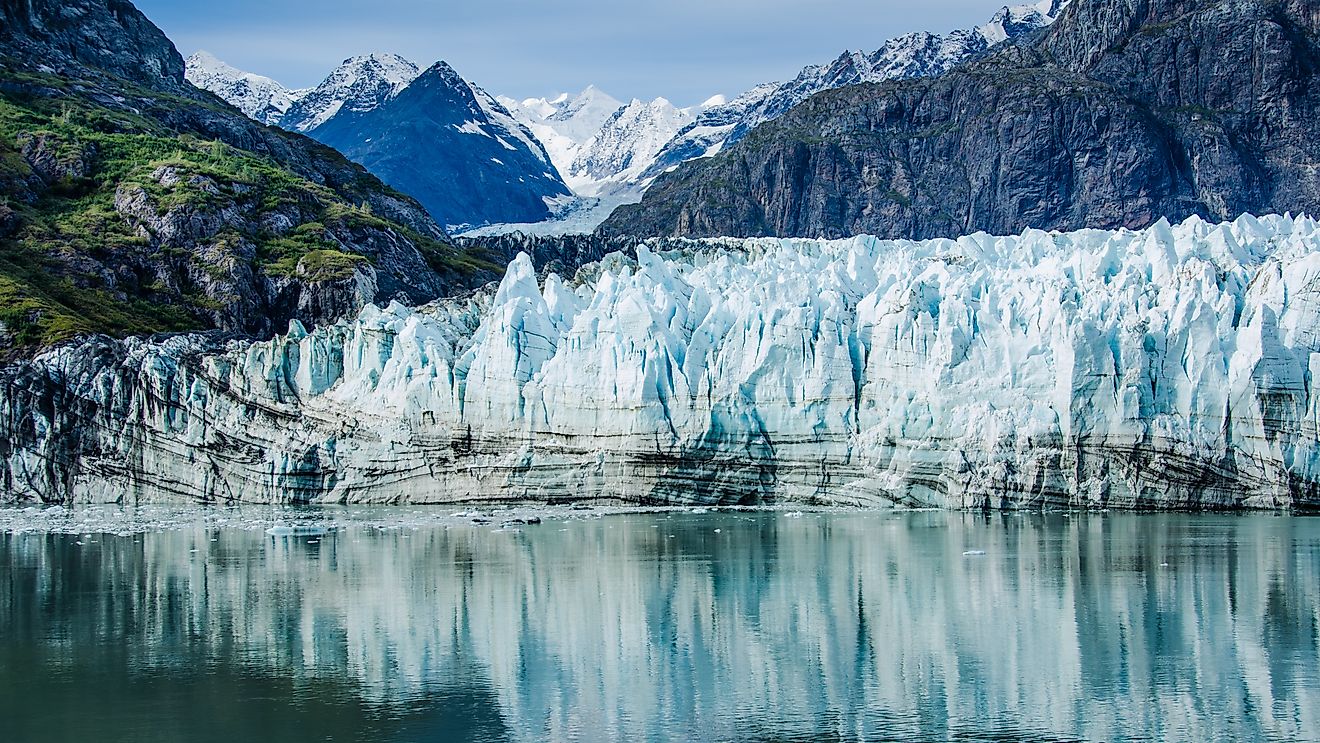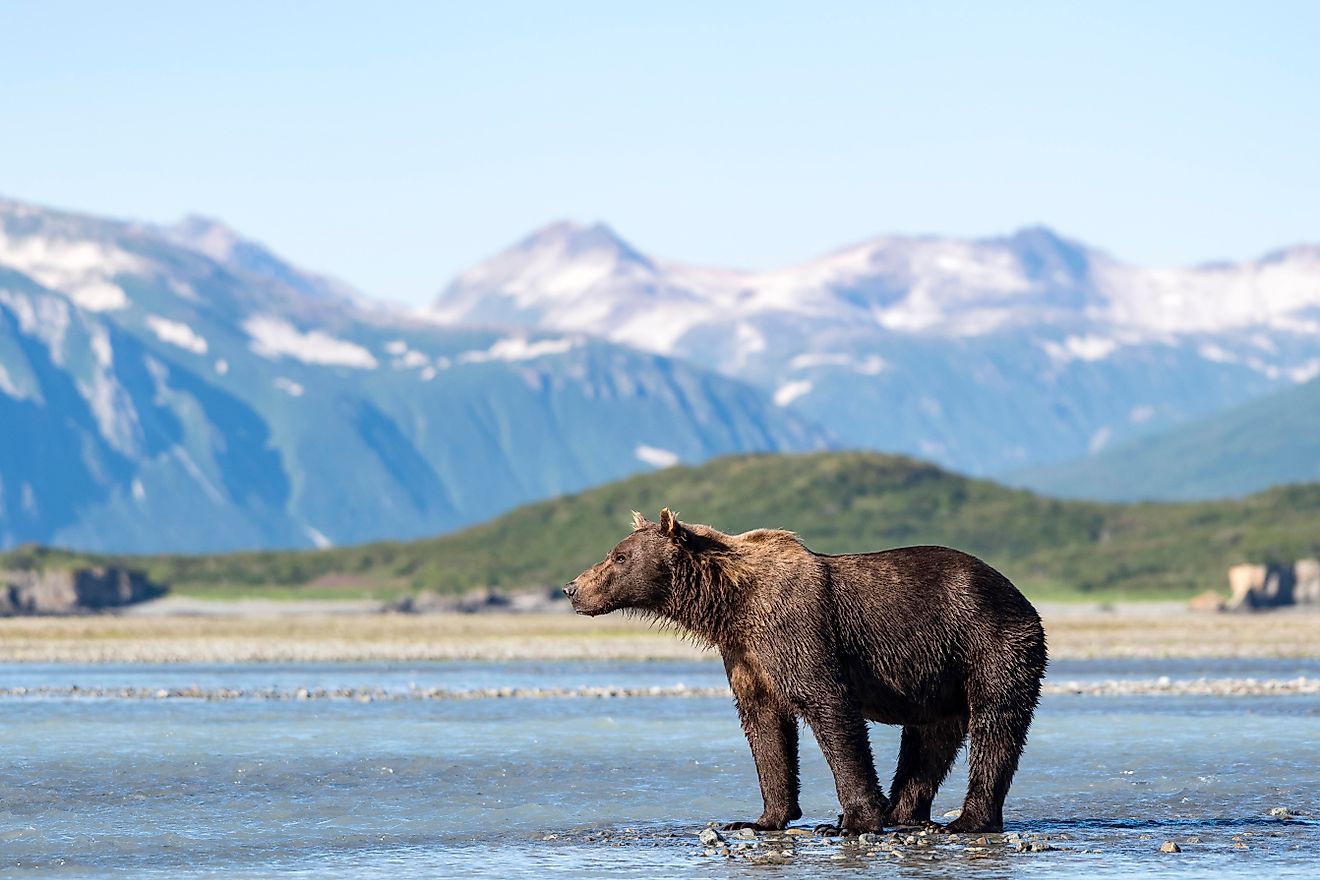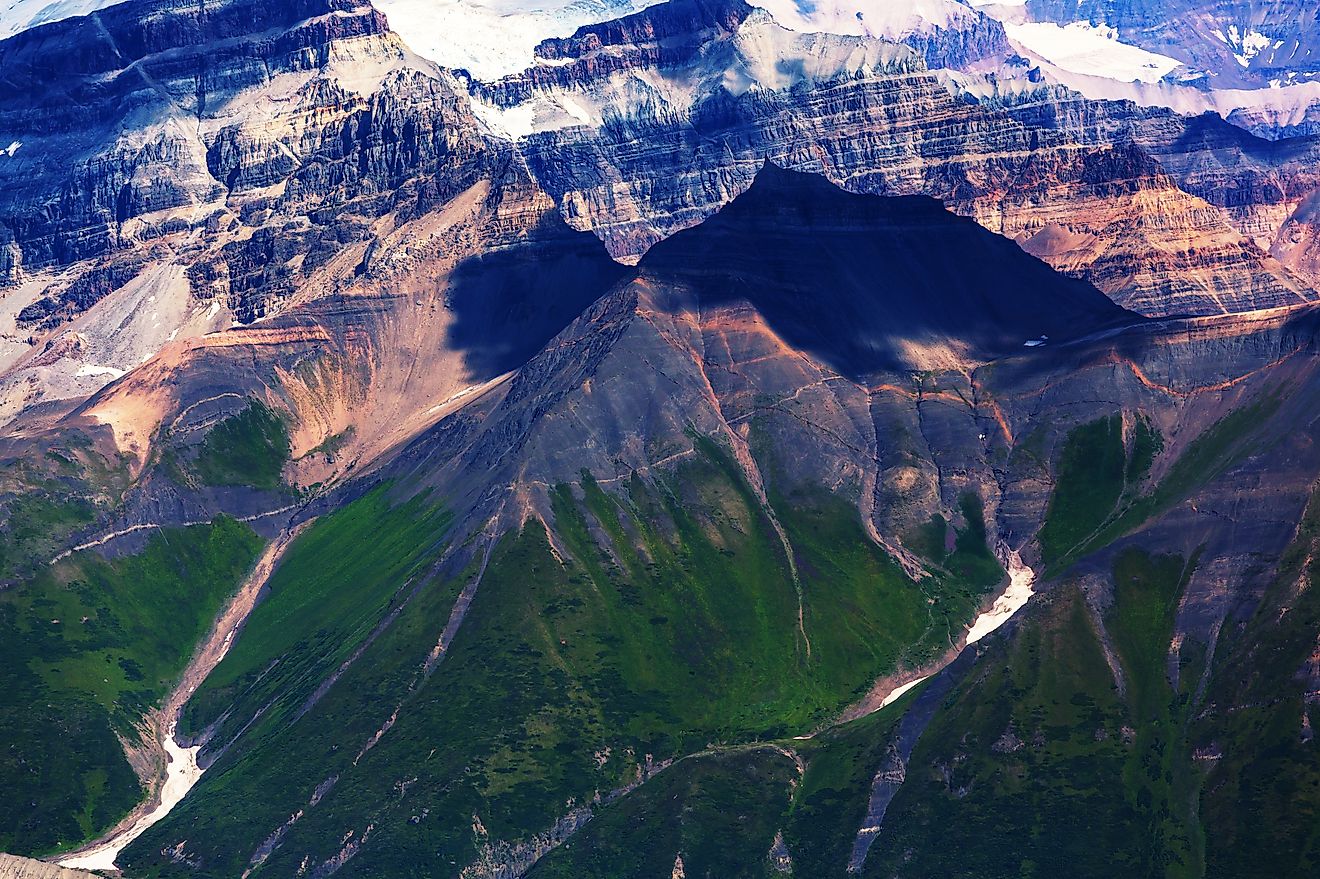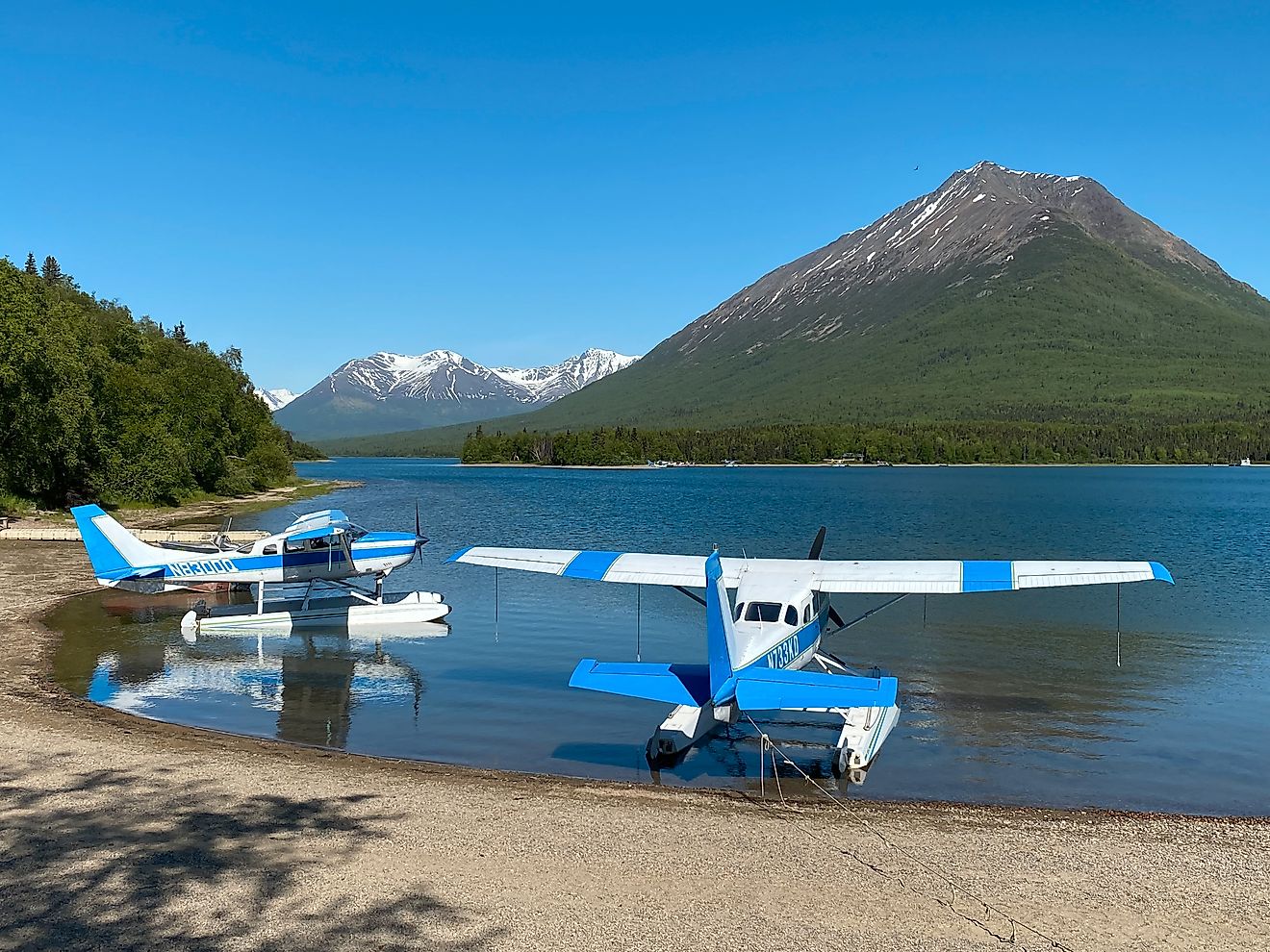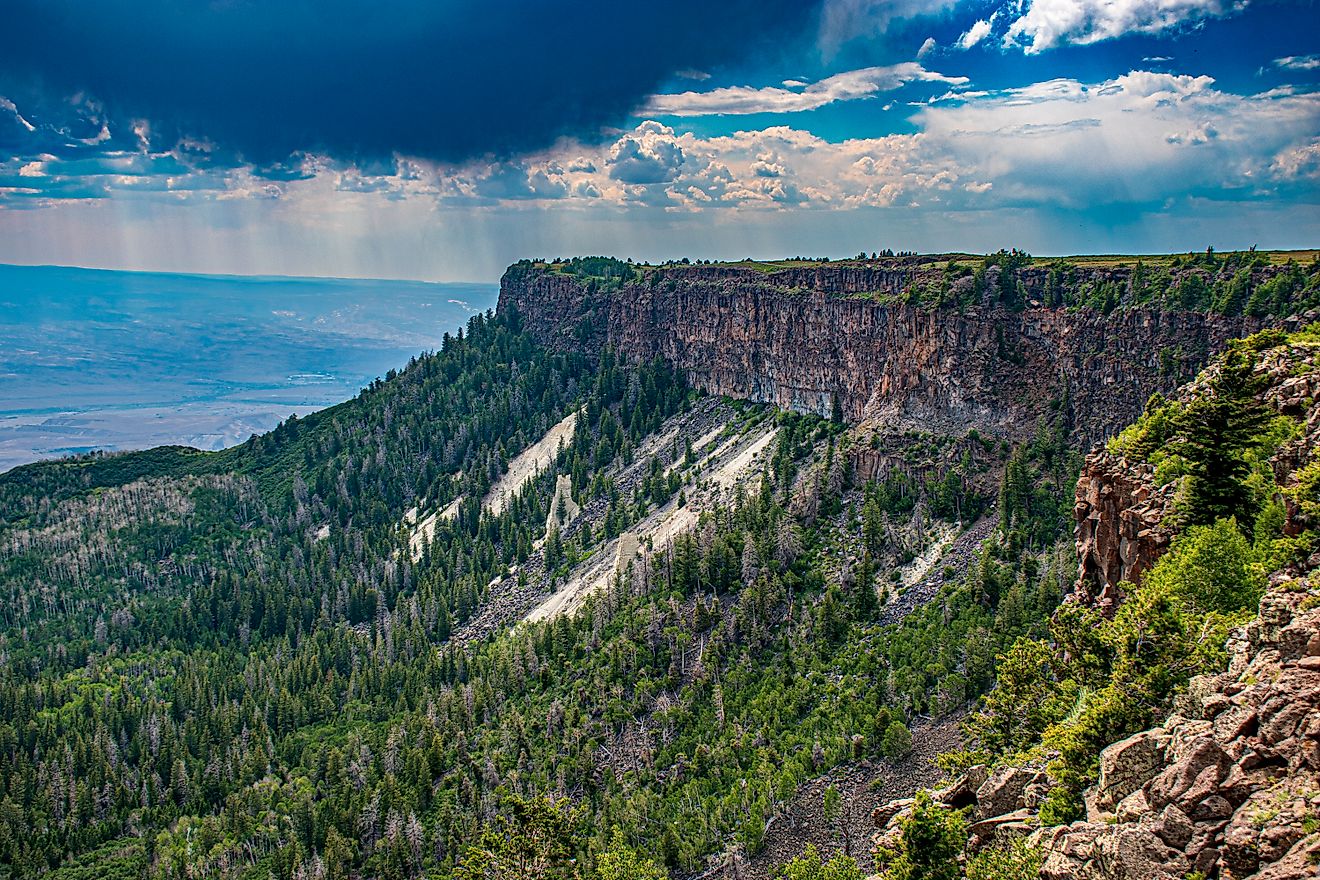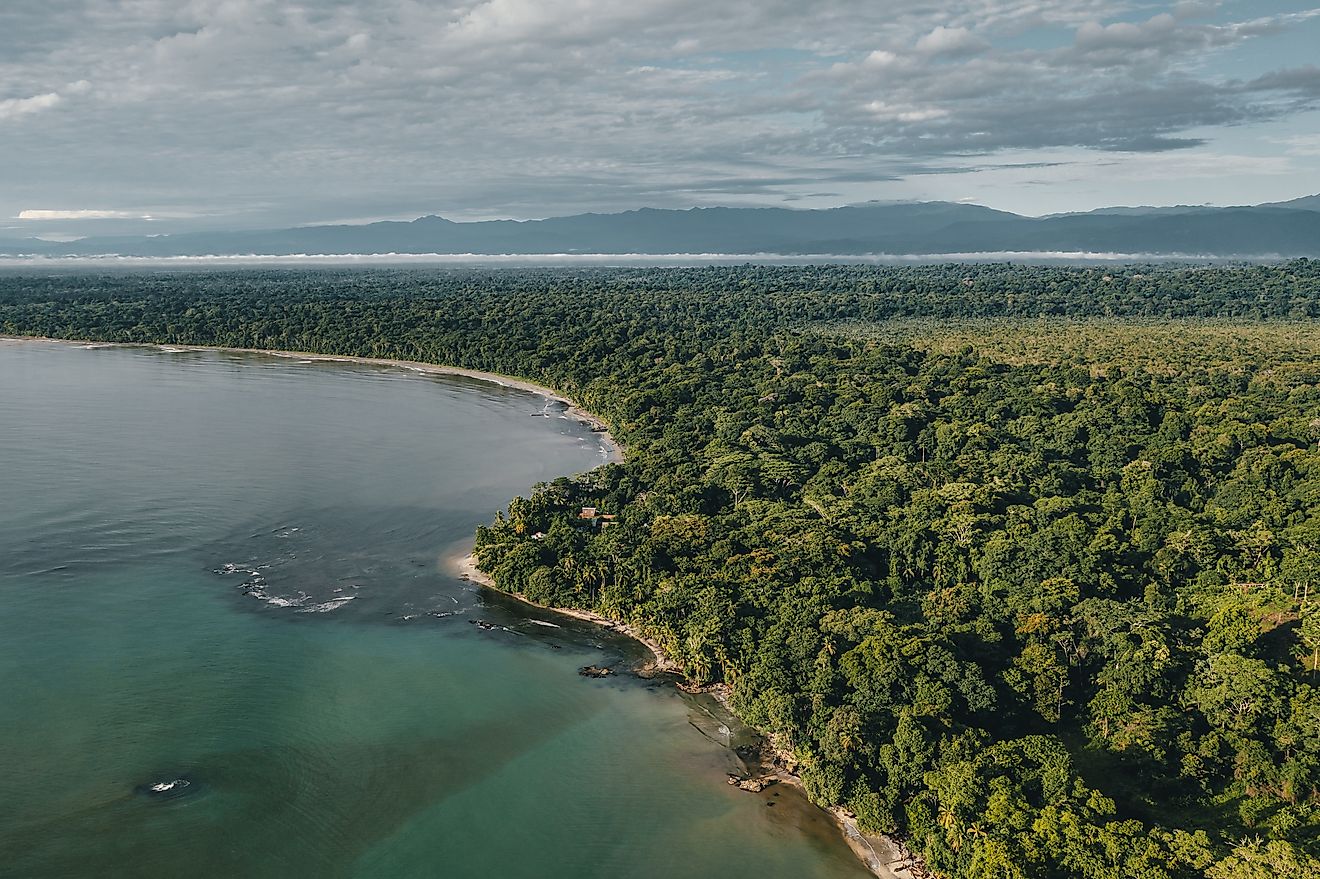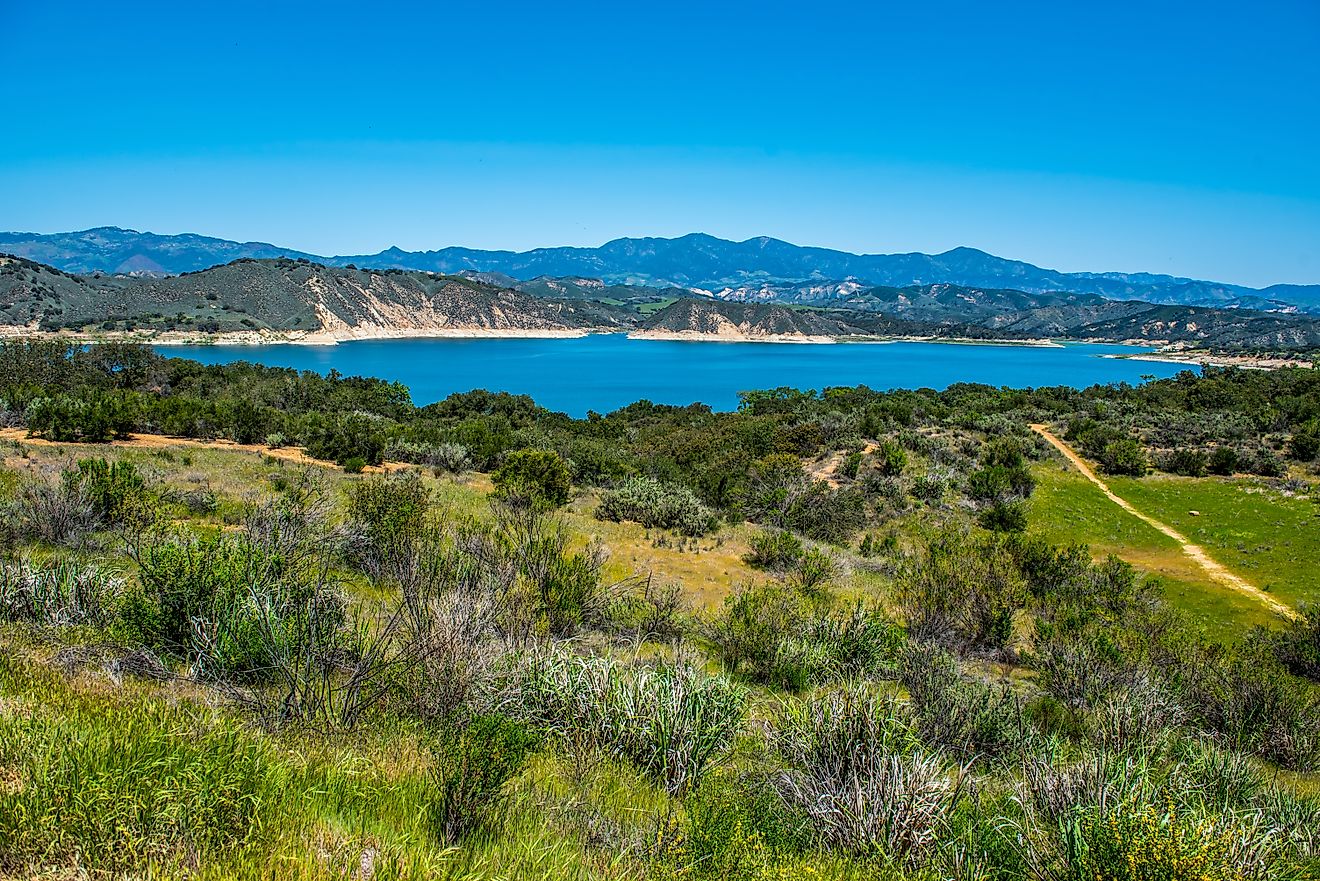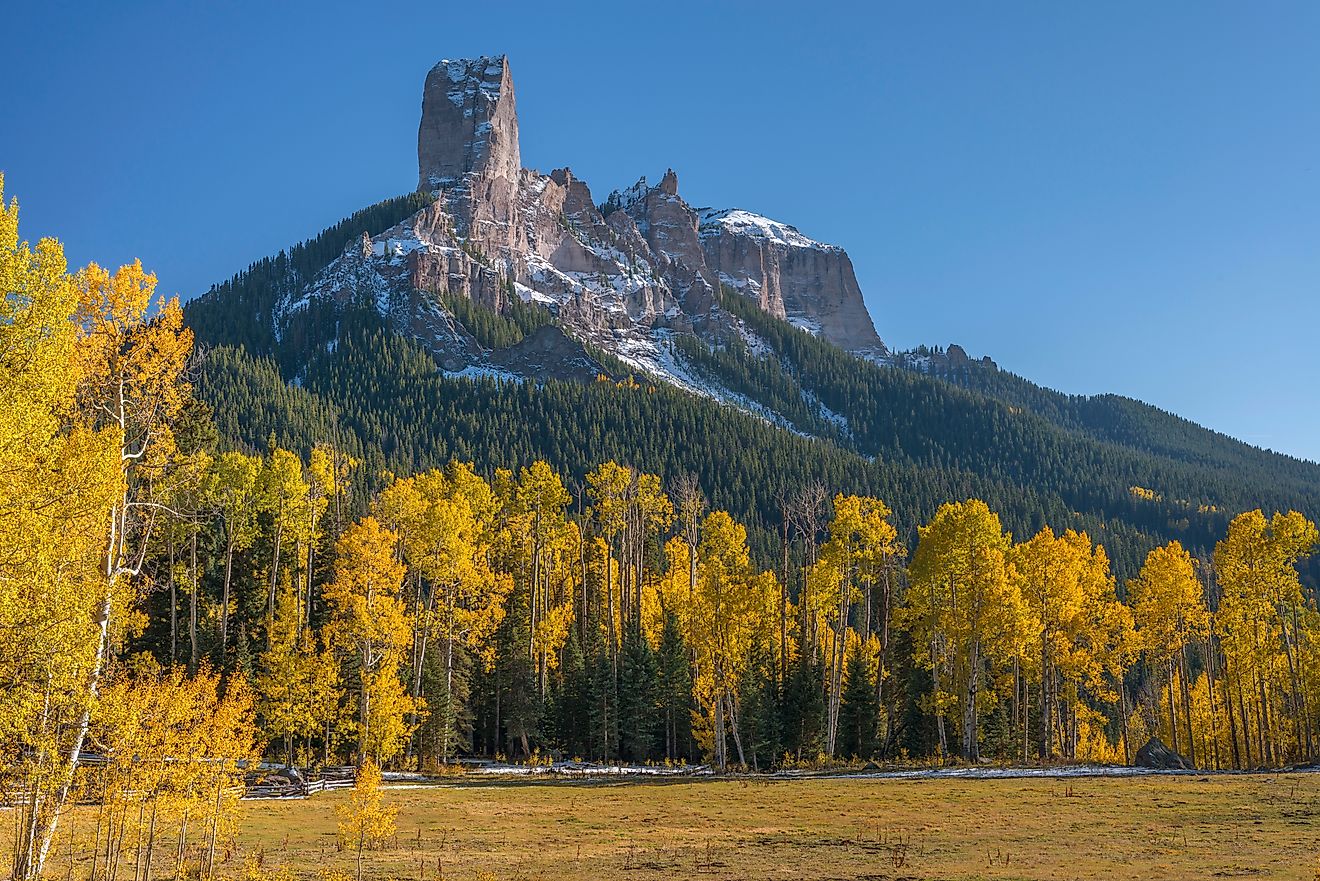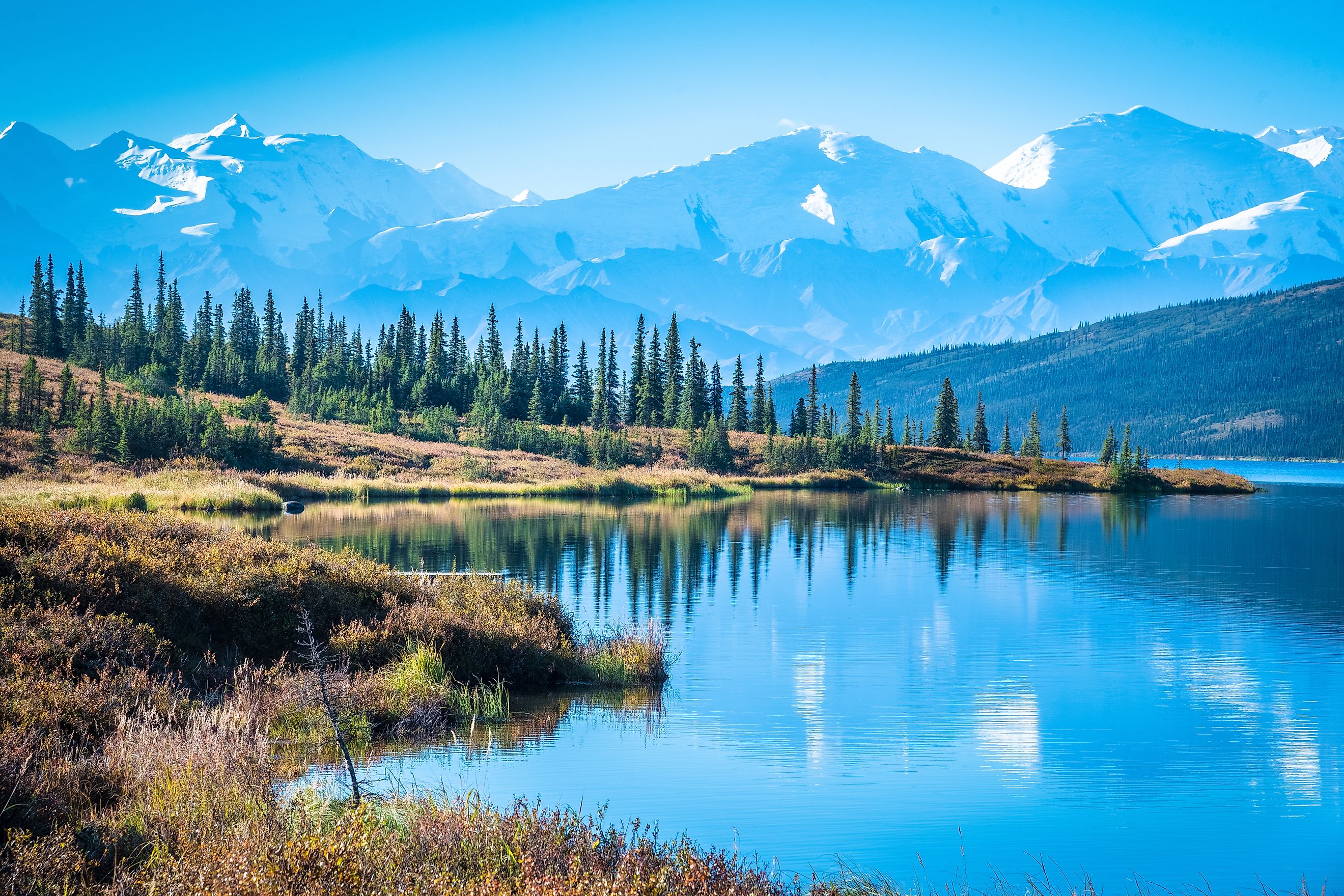
Denali National Park
Rising like a myth from the clouds, Denali—“The Tall One”—is more than a mountain. It’s a symbol of wild, untouched America. Towering at 20,310 feet, Denali is the highest peak in North America, and it watches over one of the most remote, rugged, and breathtaking landscapes in the US. Nestled in the heart of Alaska’s interior, Denali National Park and Preserve spans over 6 million acres of pristine wilderness. It's a place where grizzly bears roam free, glaciers creep silently through mountain valleys, and visitors can witness a subarctic ecosystem functioning as it has for thousands of years.
A Monument to Untamed Nature
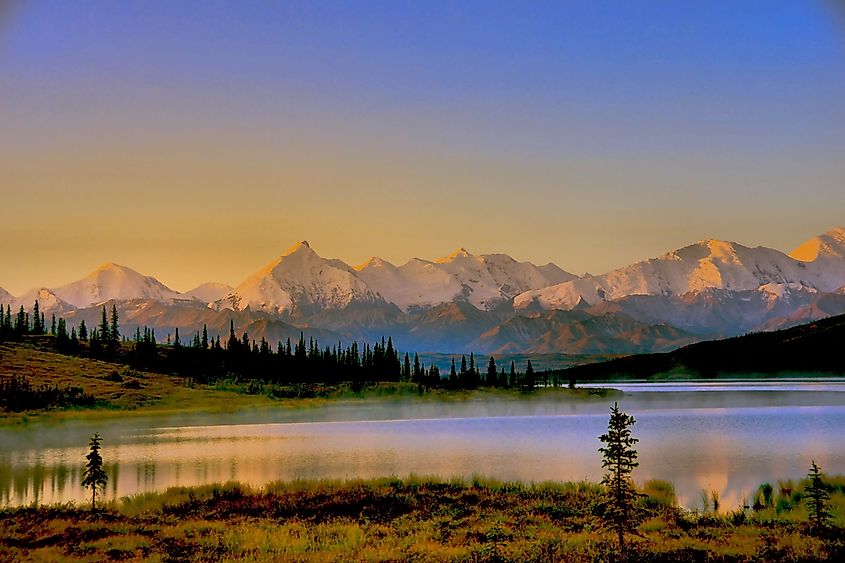
Denali National Park and Preserve isn’t just a sightseeing destination—it’s a vast, living museum of the natural world. Originally established as Mount McKinley National Park on February 26, 1917, its primary purpose was to protect the Dall sheep and other wildlife that call the region home. This focus on conservation was groundbreaking at the time and laid the foundation for what would become one of the most significant natural reserves in North America.
In 1980, the Alaska National Interest Lands Conservation Act expanded the park’s boundaries and renamed it Denali National Park and Preserve. This act also brought together the original parklands with an adjacent preserve area, forming the massive and ecologically diverse unit we know today. The park received international recognition as a biosphere reserve in 1976, a designation that underscores its global environmental importance.
The Tall One: A Mountain of Many Names
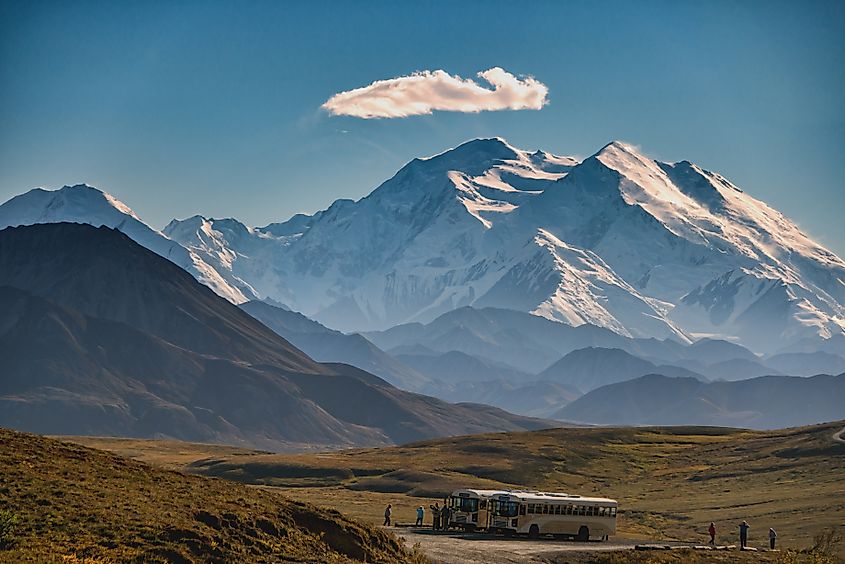
Denali's peak has long held spiritual and cultural significance. For centuries, the Koyukon Athabaskan people have revered the mountain, calling it Denali—meaning "The Tall One" or "Mountain-Big" in their native language. Despite this deep-rooted connection, the mountain was named Mount McKinley in 1896 by a prospector in support of then-presidential candidate William McKinley. That name stuck through much of the 20th century, even as Alaskans continued to refer to it by its original name.
In 2015, the U.S. Department of the Interior officially restored the name Denali, recognizing both the mountain’s indigenous heritage and the voices of Alaskans who had long called for the change. The renaming was more than symbolic—it was a return to cultural roots and a nod to the people who first called this land home.
A Landscape of Extremes
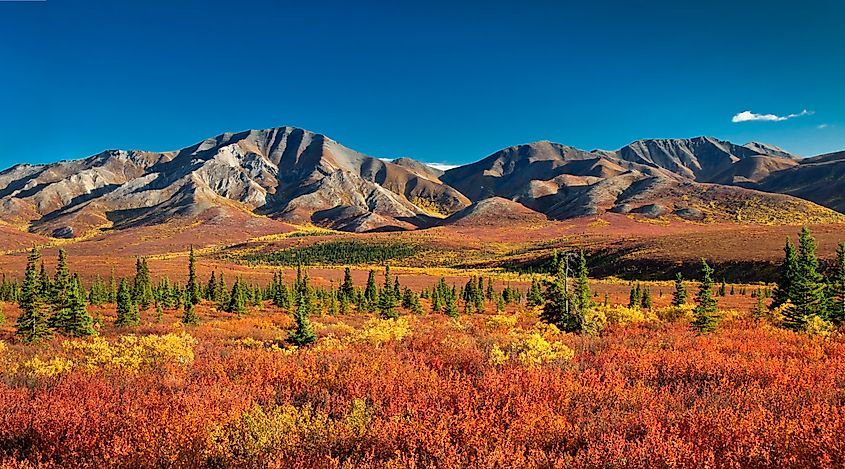
Denali National Park is part of the Alaska Range, a sweeping arc of mountains known for their beauty, remoteness, and harsh conditions. Denali itself is so tall that it creates its own weather systems, often shrouded in clouds while the surrounding landscape basks in sunlight. The Alaska Range holds more than just Denali—visitors will find rugged peaks, deep valleys, and glaciers that stretch for miles. These glaciers are among the park’s most spectacular features, slowly sculpting the land as they have for millennia.
The terrain is as diverse as it is dramatic. From boreal forests and braided rivers in the lower elevations to alpine tundra and snow-covered peaks above the treeline, the park’s ecosystem supports a wide variety of flora and fauna. Denali is the only US national park that contains a complete subarctic ecosystem, offering a unique opportunity to see natural processes unfold with minimal human interference.
Wildlife You Can’t Miss
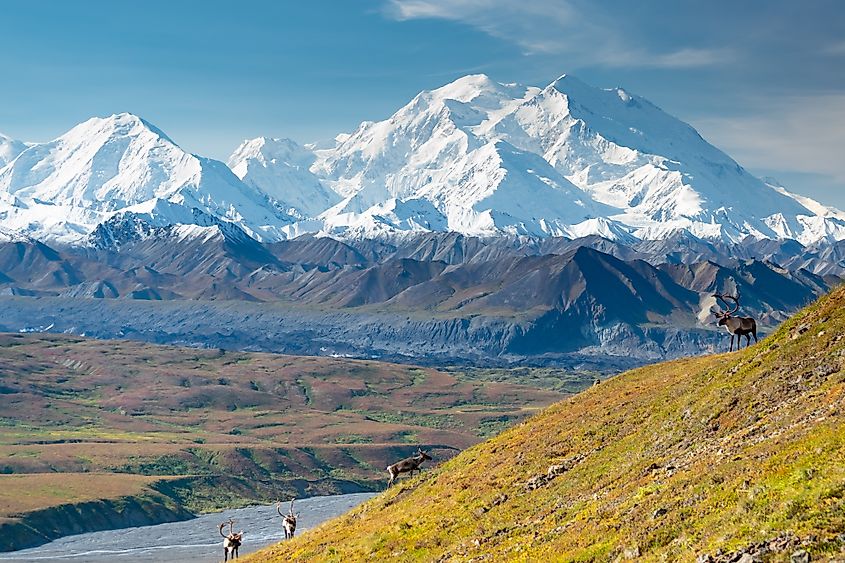
For wildlife enthusiasts, Denali is nothing short of paradise. The park is home to all of Alaska’s “Big Five” animals: grizzly bears, moose, caribou, Dall sheep, and gray wolves. Spotting even one of these iconic species can feel like a once-in-a-lifetime moment, especially against the backdrop of such untamed beauty.
Grizzly bears often roam the tundra slopes, foraging for berries and roots. Moose are commonly seen wading through marshy lakes or browsing shrubs in open meadows. Caribou move in herds across the open landscape, while Dall sheep cling to the steep rock faces, easily navigating the rugged cliffs. Wolves, the most elusive of the five, travel vast distances across the park’s wilderness.
Birdwatchers will also find plenty to love in Denali, with over 160 species of birds recorded in the park, including golden eagles, ptarmigans, and peregrine falcons. The sheer abundance and visibility of wildlife—along with the lack of fences, roads, or artificial boundaries—make Denali a true wildlife haven.
Experiencing Denali
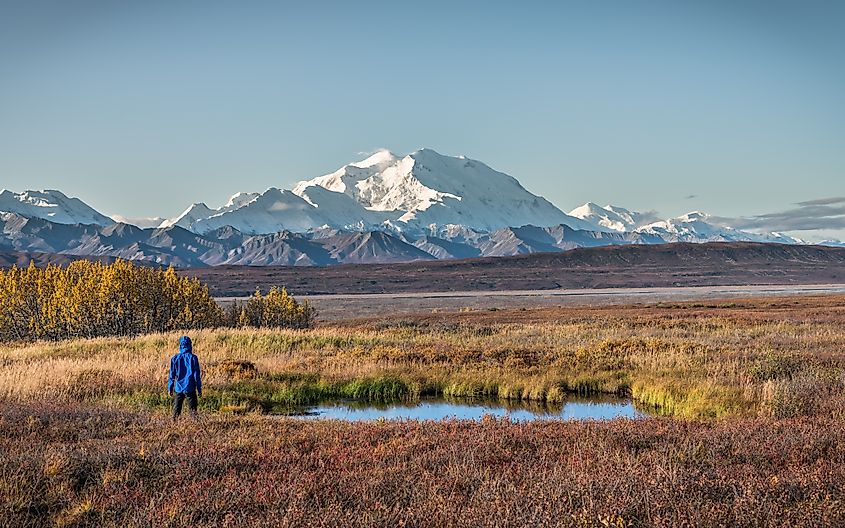
Despite its remoteness, Denali National Park offers a variety of ways for visitors to engage with the landscape. The park's single, 92-mile road is mostly unpaved and only partly accessible to private vehicles. Instead, shuttle and tour buses offer the primary means of exploring deeper into the park, helping to minimize human impact on the environment.
Popular activities include hiking, cycling, backcountry camping, and wildlife photography. Numerous trails near the park entrance offer short, scenic hikes, while the more adventurous can head into the wilderness for a true backcountry experience—no trails, no signs, just raw nature. For those seeking a deeper connection with the land, Denali is one of the few places where you can hike entirely off-trail through tundra and taiga.
Mountaineers from around the globe also come to Denali to attempt the summit of North America’s highest peak. Climbing Denali is no easy feat—it’s a multi-week expedition that requires technical skills, extreme physical conditioning, and a tolerance for some of the harshest weather on Earth.
One of the park’s most unique features is its working dog sled kennel, a nod to Alaska’s deep sledding heritage. Denali is the only national park with a traditional sled dog team, and in winter, rangers still use the dogs to patrol and maintain the park’s vast wilderness. Visitors in summer can tour the kennels and watch demonstrations, offering a rare look into this time-honored tradition.
Denali in Every Season
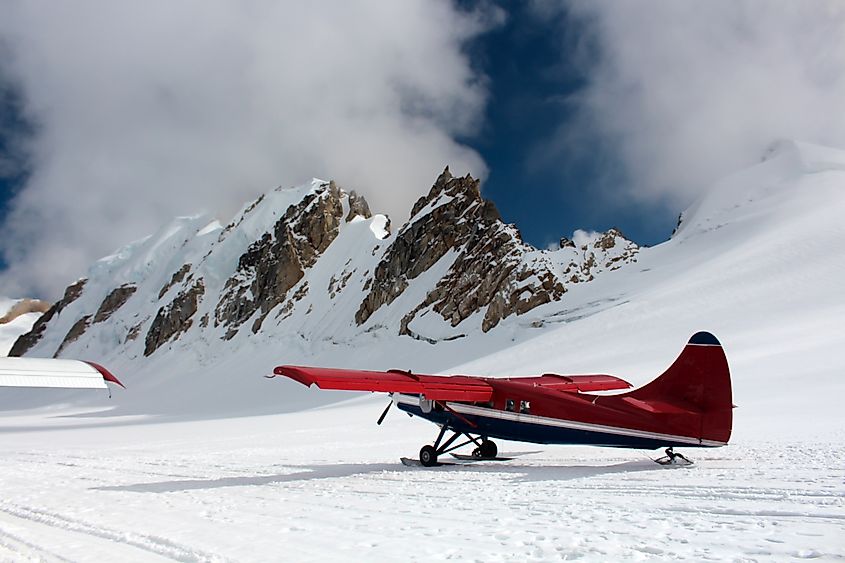
Denali National Park is open year-round, but visitor experience varies dramatically by season. Summer (June through early September) is the most popular time to visit, offering long daylight hours, accessible roads, and active wildlife. Wildflowers blanket the tundra, and the mountains—when visible—appear in all their glory.
Fall comes quickly and dramatically in Denali. By late August, the tundra turns vivid shades of red, orange, and gold. Wildlife begins preparing for winter, and visitors may be lucky enough to catch the aurora borealis dancing across the sky.
Winter, while cold and challenging, reveals a different side of Denali. Snow blankets the landscape, and visitors can explore the park on cross-country skis, snowshoes, or even on a ranger-led dog sled expedition. The silence of the snow-covered wilderness and the absence of crowds make winter visits deeply rewarding for those prepared for the elements.
Planning Your Trip
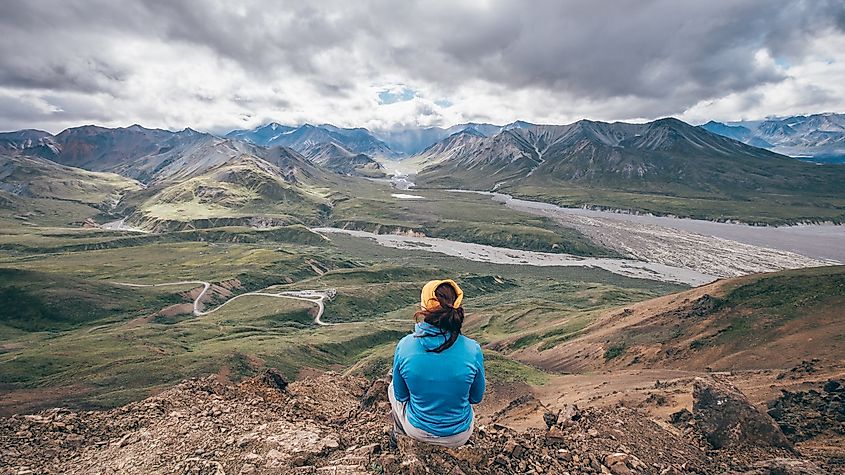
If you're considering a visit to Denali, planning ahead is essential. With limited services in the park and unpredictable weather conditions, it’s important to be flexible and well-prepared. Accommodations can be found in nearby towns like Healy or within the park itself at designated lodges. For more detailed visitor information, maps, safety tips, and updates on park conditions, the official National Park Service website for Denali is the best place to start.
The park’s remoteness, once a barrier for travelers, has become one of its greatest assets. It offers an escape into a world where nature reigns supreme—a place that demands presence, patience, and respect. Whether you're here to glimpse Denali through the clouds, spot a grizzly on the move, or simply feel the immensity of silence under the northern sky, Denali delivers an experience that stays with you long after you leave.
Q&A: Denali National Park
Where is Denali National Park located?
Denali is in south-central Alaska, about 240 miles north of Anchorage and 120 miles south of Fairbanks.
What is the best time to visit Denali?
Late June through early September is ideal for accessibility, wildlife viewing, and mild weather.
Can you drive through Denali National Park?
Only the first 15 miles of the park road are open to private vehicles. Beyond that, access is by park shuttle or tour bus.
How tall is Mount Denali?
Denali stands at 20,310 feet, making it the tallest mountain in North America.
Are there bears in Denali?
Yes, both grizzly and black bears inhabit the park and are commonly seen, especially in summer.
Is Denali open year-round?
Yes, but winter access is limited, and services are reduced. Summer is the most popular season for visitors.
